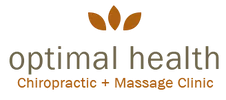Cluster Headache or Migraine: What's the Difference
- posted: Apr. 09, 2018
Cluster Headache or Migraine: What's the Difference?
Both a cluster headache and a migraine can cause debilitating pain. Both are considered to be a vascular headache, which is pain caused by dilation of blood vessels. Cluster headaches and migraines tend to be genetic. Unfortunately, cluster headaches often go undiagnosed for long periods of time, because they are often confused with a migraine. So, how do you know if the pain you are experiencing is a cluster headache or a migraine?
Migraines
A migraine is typically characterized by recurring attacks of a severe headache. Typical migraine headaches are often described as a pulsating pain and throbbing that is located on one side of your head. Migraines are thought to be caused by a mixture of environmental factors and genetics. The symptoms of a migraine may vary depending on the type of migraine you are having; however, the most common symptoms include:
- Nausea
- Vomiting
- Sensitivity to light and/or sound
- Neck stiffness
- Irritability
- Seeing white spots or halos (white rings)
- Severe pain on one side of the head
- Blurry vision
- Lightheadedness
Cluster Headaches
Cluster headaches are headaches that happen in clusters or cycles. They are generally described as extremely painful and occurring on one side of your head, generally near the temple or the eye. Cluster headaches appear without warning and generally last about 15 minutes to 3 hours, but they may recur several times throughout the day. Cluster headaches typically strike after you have fallen asleep. Symptoms may include:
- Restlessness
- Excessive tearing
- Drooping eyelid
- Pale, sweaty skin on your face
- Runny or stuffy nasal passage on the affected side
- Swelling around your eye on the affected side
As painful as these types of headaches are, the good news is, both cluster headaches and migraine headaches can be treated and often relieved with chiropractic care. Headache treatment from your chiropractor may include spinal adjustments, stretches and exercise and/or trigger point massage. Along with chiropractic treatments, your chiropractor can recommend lifestyle changes that may help to reduce the risk of triggering your headaches, such as dietary changes and ways to reduce stress.
Get In Touch With Our Chiropractor to Treat Your Headache or Migraine Today
Contact Optimal Health Chiropractic and Massage Clinic to schedule you consultation to learn more about how we can help relieve your headaches.
Contact Us
Location
Find us on the map
Primary Location
7315 212th St SW #203
Edmonds, WA 98026
Monday
9:00 am - 6:00 pm
Tuesday
9:00 am - 6:00 pm
Wednesday
9:00 am - 6:00 pm
Thursday
9:00 am - 6:00 pm
Friday
9:00 am - 6:00 pm
Saturday
Closed
Sunday
Closed
